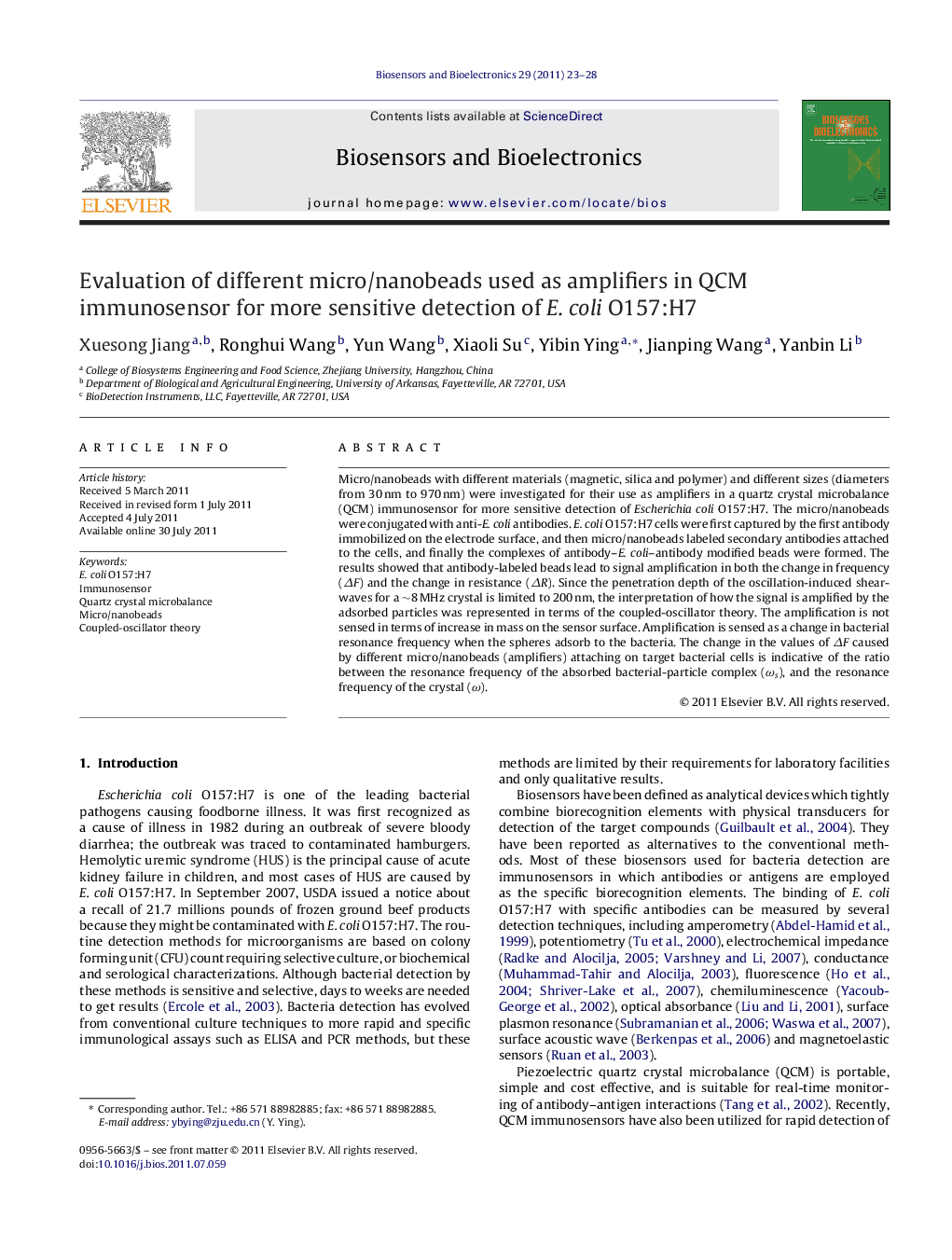| Article ID | Journal | Published Year | Pages | File Type |
|---|---|---|---|---|
| 10429406 | Biosensors and Bioelectronics | 2011 | 6 Pages |
Abstract
Micro/nanobeads with different materials (magnetic, silica and polymer) and different sizes (diameters from 30Â nm to 970Â nm) were investigated for their use as amplifiers in a quartz crystal microbalance (QCM) immunosensor for more sensitive detection of Escherichia coli O157:H7. The micro/nanobeads were conjugated with anti-E. coli antibodies. E. coli O157:H7 cells were first captured by the first antibody immobilized on the electrode surface, and then micro/nanobeads labeled secondary antibodies attached to the cells, and finally the complexes of antibody-E. coli-antibody modified beads were formed. The results showed that antibody-labeled beads lead to signal amplification in both the change in frequency (ÎF) and the change in resistance (ÎR). Since the penetration depth of the oscillation-induced shear-waves for a â¼8Â MHz crystal is limited to 200Â nm, the interpretation of how the signal is amplified by the adsorbed particles was represented in terms of the coupled-oscillator theory. The amplification is not sensed in terms of increase in mass on the sensor surface. Amplification is sensed as a change in bacterial resonance frequency when the spheres adsorb to the bacteria. The change in the values of ÎF caused by different micro/nanobeads (amplifiers) attaching on target bacterial cells is indicative of the ratio between the resonance frequency of the absorbed bacterial-particle complex (Ïs), and the resonance frequency of the crystal (Ï).
Related Topics
Physical Sciences and Engineering
Chemistry
Analytical Chemistry
Authors
Xuesong Jiang, Ronghui Wang, Yun Wang, Xiaoli Su, Yibin Ying, Jianping Wang, Yanbin Li,
